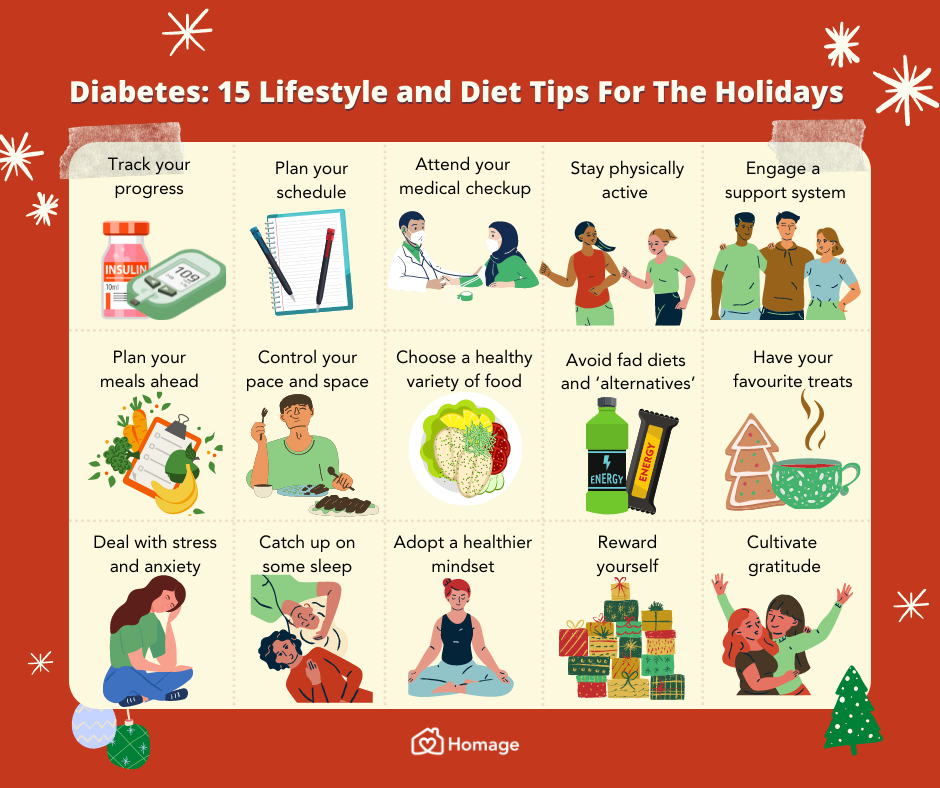Discover the ultimate diet strategies to manage Type 1 Diabetes effectively and improve your overall health and well-being now!
Table of Contents
- Introduction: Winning the Battle Against Type 1 Diabetes with Your Plate
- Understanding Type 1 Diabetes
- Why What You Eat Matters
- Avoiding Highs and Lows
- Foods to Include in Your Daily Adventures
- Building Your Diabetes-Friendly Diet
- Creating a Diabetes-Friendly Kitchen
- Fun Activities and Meal Planning
- Tips for Eating Out and Attending Parties
- Supporting Your Journey: Talking to Friends and Teachers
- Summary: Your Superhero Diet for Tackling Type 1 Diabetes
- FAQs: Fast Answers to Your Curious Questions
Introduction: Winning the Battle Against Type 1 Diabetes with Your Plate
Type 1 diabetes may sound like a big and scary term, but with the right diet, you can help manage this condition like a superhero. Your plate can be your secret weapon in the fight against type 1 diabetes. Let’s dive into how what you eat can make a big difference in keeping your body healthy and happy!
Managing type 1 diabetes is all about balancing your blood sugar levels and making sure your body gets the nutrients it needs. And guess what? Your plate is the perfect place to start!
By choosing the right foods and making smart decisions when it comes to your diet, you can take control and feel empowered in managing type 1 diabetes. Let’s explore how a superhero diet can help you lead a healthy and fulfilling life despite this condition. Get ready to unlock the power of your plate!
Understanding Type 1 Diabetes
Living with Type 1 diabetes can be challenging, especially for kids who are still growing and learning. Understanding what Type 1 diabetes is essential in managing the condition effectively. Let’s dive into the basics of Type 1 diabetes and how it impacts children.
What is Type 1 Diabetes?
Type 1 diabetes is a chronic condition where the body’s immune system mistakenly attacks and destroys insulin-producing cells in the pancreas. Insulin is a hormone that helps regulate blood sugar levels by allowing cells to absorb glucose for energy. Without enough insulin, glucose cannot enter the cells, leading to high blood sugar levels.
How Type 1 Diabetes is Different
Unlike Type 2 diabetes, which is often linked to lifestyle factors like diet and exercise, Type 1 diabetes is not preventable or curable. People with Type 1 diabetes rely on insulin injections or an insulin pump to manage their blood sugar levels and stay healthy.
Why What You Eat Matters
Have you ever wondered why it’s important to pay attention to what you eat when you have Type 1 diabetes? Well, what you put on your plate can directly impact your blood sugar levels. When you have Type 1 diabetes, your body doesn’t make insulin, a hormone needed to convert sugar, starches, and other food into energy. This means that the food you eat can cause your blood sugar to spike or drop dramatically.

Image courtesy of www.pinterest.com via Google Images
Some foods, like sugary snacks and drinks, can make your blood sugar shoot up quickly, leading to highs that can make you feel sick or tired. On the other hand, foods that are high in fiber, like whole grains, fruits, and vegetables, can help keep your blood sugar levels stable and prevent those dramatic spikes and crashes.
It’s essential to balance your meals with a mix of carbohydrates, proteins, and fats to help manage your blood sugar levels throughout the day. By choosing healthy, nutritious foods, you can help keep your blood sugar in check and feel your best!
Avoiding Highs and Lows
In order to effectively manage Type 1 diabetes, it’s crucial to keep your blood pressure and cholesterol levels in check. Let’s dive into why these factors are important and how you can maintain a healthy balance through your diet.
Keeping Your Blood Pressure in Check
Low blood pressure, also known as hypotension, can cause dizziness, fainting, and other health issues. To help regulate your blood pressure, it’s essential to consume foods that are rich in potassium, such as bananas, sweet potatoes, and spinach. These foods can help keep your blood pressure at a healthy level.
Why Watching Your Cholesterol is Important
High cholesterol levels can put you at risk for heart disease and other complications. To lower your cholesterol, focus on incorporating foods like oats, nuts, and olive oil into your diet. These foods can help reduce your LDL cholesterol levels and promote better heart health.
Balancing the Sugar Scale
Avoiding extreme blood sugar spikes and drops is crucial for managing Type 1 diabetes. To maintain stable blood sugar levels, opt for complex carbohydrates like whole grains, fruits, and vegetables. These foods release sugar slowly into your bloodstream, preventing sudden spikes and crashes. Remember, balance is key!
Foods to Include in Your Daily Adventures
When it comes to managing type 1 diabetes, incorporating specific nutrients into your daily meals can make a big difference in keeping your blood sugar levels stable. Here are some foods that you can include in your daily adventures to support your health:

Image courtesy of yoripe.com via Google Images
Omega 3: Your Heart’s Best Friend
Omega 3 is a type of healthy fat that is great for your heart. You can find omega-3 in foods like fatty fish such as salmon, mackerel, and tuna. These fish are not only delicious but also provide essential nutrients that can help keep your heart healthy and strong.
Magnesium: The Magic Mineral
Magnesium is a mineral that plays a crucial role in many bodily functions, including controlling blood sugar levels. You can get magnesium from foods like nuts, seeds, whole grains, and leafy green vegetables like spinach and kale. Adding these magnesium-rich foods to your meals can help support your overall health and well-being.
Building Your Diabetes-Friendly Diet
Creating a meal plan that is safe and delicious is key to managing Type 1 diabetes. Here are some helpful tips to guide you in building a diabetes-friendly diet.
Colorful Plates: Eating a Rainbow
It’s important to include a variety of fruits and vegetables in your diet. These colorful foods are packed with vitamins and minerals that are beneficial for your health. Try to add a mix of different-colored fruits and vegetables to your plate to ensure you’re getting a range of nutrients.
Tasty Swaps for Sugary Snacks
Instead of reaching for sugary snacks, opt for healthier alternatives that are just as tasty. Snack on fresh fruits, nuts, or seeds to satisfy your cravings without causing a spike in your blood sugar levels. These options provide nutrients and energy without the harmful effects of added sugars.
Creating a Diabetes-Friendly Kitchen
When it comes to managing type 1 diabetes, having a well-equipped and organized kitchen can make a significant difference in your health journey. Here are some tips on how to stock your kitchen with the right tools and foods to help you stay on track.

Image courtesy of evidation.com via Google Images
Must-Haves in the Pantry
Having a pantry stocked with diabetes-friendly essentials can make meal preparation easier and more convenient. Here are some items you should always have on hand:
- Whole grains like brown rice, quinoa, and whole wheat pasta for stable energy levels
- Canned beans and legumes for plant-based protein sources
- Healthy fats such as olive oil, nuts, and seeds
- Herbs and spices to season dishes without adding extra salt
- Low-sodium broth for flavorful soups and stews
Gadget Guide: Helpful Tools
Equipping your kitchen with the right tools can streamline meal preparation and make cooking more enjoyable. Here are some kitchen gadgets that can be especially useful for managing type 1 diabetes:
- A food scale for portion control and accurate carb counting
- A slow cooker for easy, hands-off meal preparation
- An instant-read thermometer to ensure meats are cooked to a safe temperature
- A vegetable spiralizer for creating low-carb pasta substitutes
- A blender for making nutritious smoothies and soups
Fun Activities and Meal Planning
Meal planning and preparation can be a fun and exciting activity for the whole family. Involving everyone in the process not only ensures that you’re eating delicious and nutritious meals but also creates special moments that bring everyone together.
Family Cooking Night
One way to make meal planning enjoyable is by having a family cooking night. Choose a day of the week where everyone can come together in the kitchen and prepare a meal. You can assign different tasks to each family member, like chopping vegetables, stirring the pots, or setting the table.
| Category | Diet Tips |
|---|---|
| Foods to Include | Vegetables, fruits, whole grains, lean proteins, low-fat dairy |
| Foods to Limit | Sugary drinks, refined carbohydrates, processed foods, excessive fats |
| Meal Timing | Consistent meal times, spaced throughout the day |
| Portion Control | Monitor portion sizes, use measuring cups or food scales |
| Carbohydrate Counting | Track carb intake, aim for consistent carb amounts per meal |
Try making homemade pizzas with whole grain crust, lots of veggies, and lean protein like grilled chicken. This way, you can customize each person’s pizza to their liking while still keeping it healthy.
D.I.Y. Snack Creations
For a creative and engaging activity, suggest making D.I.Y. snack creations with your kids. Set up a snack bar with various healthy options like whole grain crackers, low-fat cheese, sliced fruits, and nuts. Let your kids create their snack combinations and share them with the entire family.
You can also make snack kebabs by threading fruits, veggies, and cheese cubes onto skewers. This not only makes snacking fun but also encourages kids to eat a variety of foods in one sitting.
Tips for Eating Out and Attending Parties
When you have Type 1 diabetes, it’s essential to make smart choices, even when eating out or celebrating at parties. Here are some helpful strategies to enjoy these occasions while taking care of your health.

Image courtesy of www.pinterest.com via Google Images
Choosing Diabetes-Friendly Foods at Restaurants
When dining out, look for dishes that include lean proteins like grilled chicken or fish, plenty of vegetables, and whole grains. Avoid fried or breaded options and opt for steamed, roasted, or grilled preparations instead. Ask for dressings and sauces on the side to control the amount you consume. Don’t hesitate to inquire about how dishes are prepared and request modifications to suit your dietary needs. Remember, moderation is key, and you can still enjoy eating out while managing your Type 1 diabetes effectively.
The Party Survival Guide
Attending parties can be fun and exciting, but it’s essential to be mindful of what you eat and drink to keep your blood sugar levels stable. Start by checking out all the available options before filling your plate. Choose fruits, vegetables, and proteins first to help balance your meal. If you decide to indulge in treats or dessert, opt for smaller portions and eat slowly to savor the flavors. It’s okay to enjoy yourself, just remember to make thoughtful choices that align with your dietary needs. Stay hydrated by drinking water or unsweetened beverages throughout the event. By being prepared and making conscious decisions, you can have a great time at parties without compromising your health.
Supporting Your Journey: Talking to Friends and Teachers
When it comes to sharing information about your Type 1 diabetes with your friends, remember that honesty is key. You can start by simply letting them know what diabetes is and how it affects your daily life. Explain that you need to pay attention to what you eat to keep your blood sugar levels in check. You can also share how they can help you, like being understanding if you need to take a break to check your blood sugar levels or have a snack.
Talking to Teachers and School Staff
It’s crucial to have open communication with your teachers and school staff about your dietary needs related to Type 1 diabetes. You can schedule a meeting with them to discuss your condition and explain how they can support you. Make sure they are aware of any specific snacks or medications you may need during the school day. You can also work together to come up with a plan in case of a blood sugar emergency while you’re at school.
Summary: Your Superhero Diet for Tackling Type 1 Diabetes
In the battle against Type 1 diabetes, your plate can be your most powerful weapon. By making smart food choices, you can help manage this condition like a true superhero. Let’s recap the key points to create your superhero diet plan.

Image courtesy of www.homage.com.my via Google Images
Understanding Type 1 Diabetes
Type 1 diabetes is when your body doesn’t make insulin, a hormone that helps glucose (sugar) get into your cells for energy. It’s important to balance your blood sugar levels by eating the right foods.
Why What You Eat Matters
The food you eat directly impacts your blood sugar levels. By choosing the right foods, you can keep your blood sugar stable and avoid highs and lows that can make you feel unwell.
Avoiding Highs and Lows
Keeping your blood pressure and cholesterol levels in check is crucial for your overall health. By eating a balanced diet, you can help prevent complications related to high blood pressure and cholesterol.
Foods to Include in Your Daily Adventures
Omega 3 and magnesium are key superheroes when it comes to managing Type 1 diabetes. Foods rich in omega 3 and magnesium can support your heart health and overall well-being.
Building Your Diabetes-Friendly Diet
Eating a variety of colorful fruits and vegetables, and swapping sugary snacks for healthier options, can help you create a delicious and diabetes-friendly meal plan.
Creating a Diabetes-Friendly Kitchen
Stocking your pantry with essentials and using helpful kitchen tools can make preparing healthy meals at home easier and more enjoyable.
Fun Activities and Meal Planning
Involving your family in meal planning and cooking can make managing Type 1 diabetes a fun and educational experience. Family cooking nights and snack-making activities can be both delicious and health-focused.
Tips for Eating Out and Attending Parties
When dining out or attending parties, it’s important to make smart food choices that support your diabetes-friendly diet. By planning ahead and making thoughtful decisions, you can enjoy these activities while staying healthy.
Supporting Your Journey: Talking to Friends and Teachers
Communication is key when it comes to managing Type 1 diabetes. By explaining your dietary needs to friends and teachers, you can ensure that everyone understands how to support you on your superhero journey.
FAQs: Fast Answers to Your Curious Questions
Can I ever have sweets?
While it’s important to manage your blood sugar levels, you can still enjoy sweets in moderation! It’s all about balance. You can treat yourself occasionally, but remember to keep an eye on your portions and consider how sweets fit into your overall meal plan.
Do I need to eat differently from my family?
No, you don’t have to eat completely different meals from your family. Your meals can be adapted to suit your needs without making a separate dish for yourself. You can focus on including a variety of nutritious foods that work for both you and your family members. Communication with your family about your dietary needs is key to make this adjustment seamless.




